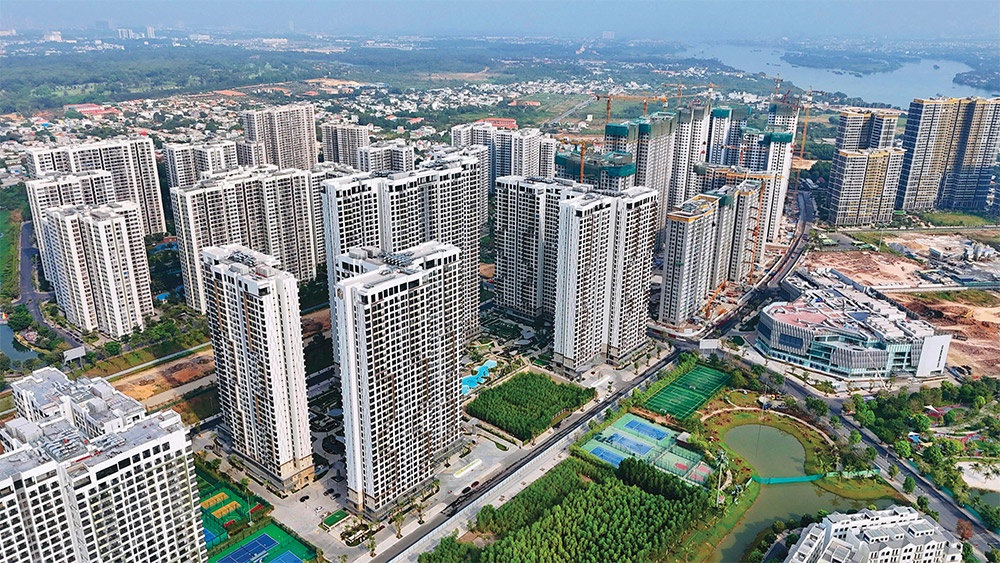Land law overhaul transforms land acquisition
 |
| Lawyers Duyen Ha Vo (left) and Tram Dang from VILAF |
Vietnam's land acquisition landscape is poised for a transformation with the upcoming enforcement of the recently approved Land Law, scheduled to take effect in 2025.
It extends and further intricately categorises the list of ventures eligible in terms of socioeconomic development based on national and public benefit considerations, referred to as land revocation eligibility projects (LREPs).There are two main implications of this list: proposals for such a project enable the state to reclaim land from existing occupants to allocate or lease to the investor; and it is permissible to propose such a project on land acquired through a private agreement with existing land users, subject to approval from the provincial People's Committee.
Examples of new items added to this list are medical facilities, educational and training facilities, projects of renovation and rebuilding apartments, and sea reclamation schemes.
Examples not considered as LREPs are hotels, housing developments, and commercial complexes.
Another revolutionary change introduced in the Land Law is the introduction of a regime for private agreement on land acquisition for project development, which may apply in cases that land is not under control by any state agency. This private agreement scheme is applicable regardless of whether the proposed project is a LREP or otherwise, provided that for commercial housing, this scheme may apply only to delivery of residential land; and for a LREP, application of this scheme must be approved by the provincial People’s Committee.
This new scheme is, however, unlikely to be made available to foreign-owned enterprises unless the acquisition is made in the form of a capital contribution of land use rights in cases where such contribution is permitted under the Land Law.
 |
With respect to investor selection tendering requirements, the new Land Law further limits and clarifies the types of projects which may be subject to the requirement of holding investor selection tendering. Accordingly, tendering is mandatory only for township developments decided to offer via investor selection tendering by the provincial People’s Council; and LREPs subject to tendering under the regulations applicable to the respective sector or field.
In late November, the Ministry of Planning and Investment released a draft decree on investor selection tendering to implement the new Law on Tendering for evaluation. This proposed regulation consolidates and provides guidance on the list tendering-required projects (TRPs) subject to tendering under regulations governing specific sectors or fields.
Tendering applies to those projects if they are LREPs or involve the use of land currently under the control of a state agency, and if they are ineligible for land auction under applicable laws.
As per the above proposed regulation, TRPs encompass international football betting, domestic solid waste treatment, specialised aviation services at airports, and joint ventures with state-owned enterprises involving changes in land use purposes. Additionally, education and training facilities, sports facilities, horse racing or greyhound racing ventures, and apartment building renovation or rebuilding also fall under this category if at least two potential investors express interest.
With respect to land auction, if the subject land is clean land under the control of a state agency, land auction is mandatory to obtain such land for project development, unless it is on the list of auction exemption cases (see the table below) or otherwise subject to mandatory tendering.
The land offered for auction must be clean land, meaning it has been reclaimed from existing occupants with compensation for land resettlement having been disbursed, and it must have connections to road infrastructure.
| Auction exemption cases: (a) Land use fee or land rental (b) The project is a LREP utilising state capital (c) It is a PPP-based LREP (d) The land use is for mandatory relocation for environmental pollution considerations (e) The land use is for mining activities (f) The land use is for relocation under a resettlement and land clearance plan (g) It is a LREP with only one investor meeting the necessary criteria, in the case that the tendering laws or other regulations governing its sector or field requires tendering where multiple eligible investors express interest (h) It has undergone two unsuccessful land auctions. The land allocation or lease without another auction must be initiated within 12 months after the second unsuccessful auction (i) A foreign-owned enterprise acquires a real estate project. |
Last but not least, the new Land Law introduces a revolutionary legal framework for authorising land use for multiple purposes, according to which the land user may be approved to add ancillary use purposes to its primary use purpose.
Of particular importance to developers, residential land may add agricultural, or commercial, service uses as ancillary-use purposes, and religious and worship land may add commercial or service uses as ancillary-use purposes. Agricultural land and non-agricultural land may also add construction of postal, telecommunications, and electricity infrastructure works as ancillary-use purposes.
The land user must submit a modified land use plan proposal to the competent state agency for approval. This scheme is subject to further detailed regulatory guidance of the government.
 | A new property market cycle is beginning for Vietnam The new Land Law should promote market mechanisms, regulate interest groups, put people first, and minimise disparities between real estate businesses. |
What the stars mean:
★ Poor ★ ★ Promising ★★★ Good ★★★★ Very good ★★★★★ Exceptional
Related Contents
Latest News
More News
- JustCo expands business into Vietnam (December 22, 2025 | 17:58)
- Sun Group breaks ground on $2 billion Van Don casino complex (December 19, 2025 | 18:14)
- Rare, beautiful, sustainable: the mark of iconic real estate (December 19, 2025 | 08:00)
- Owner-occupied housing stabilises, paving the way for new growth cycle (December 18, 2025 | 17:04)
- Unlocking urban potential of smart cities (December 18, 2025 | 16:50)
- Green finance offers 'passport' for Vietnamese construction, building materials firms (December 15, 2025 | 08:00)
- Gamuda Land commit long-term investment (December 12, 2025 | 11:49)
- HITC ties up with Evolution to develop AI and hyperscale data centres in Vietnam (December 11, 2025 | 12:09)
- Real estate deals boom via high-profile names (December 08, 2025 | 11:32)
- Industrial segment shaped by M&As (December 08, 2025 | 08:00)

 Tag:
Tag:





















 Mobile Version
Mobile Version